Fewer than half of the students who applied early to college this fall submitted standardized test scores, according to an analysis by the nonprofit that publishes the Common Application.
The data point could mark a watershed moment in admissions, college advisers say, when a pandemic pause in SAT and ACT testing requirements evolved into something more permanent.
Just three years ago, 78 percent of applicants included test scores in their early Common App submissions, a round of admissions that ends Nov. 1.
The share of applicants reporting SAT or ACT scores plunged in 2020, as COVID-19 shuttered testing sites and drove hundreds of colleges to adopt “test-optional” admissions.
Many observers expected the testing requirement to return as restrictions lifted. It hasn’t.
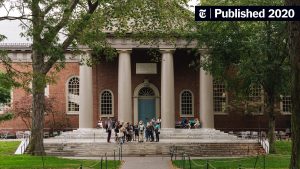
“We’ve actually seen an increase in the share of colleges on the Common App that don’t require a test score,” said Preston Magouirk, senior manager of research and analytics at Common App.
More than 1,800 colleges are “test-optional” this year, including most elite public and private campuses, according to the National Center for Fair and Open Testing, or FairTest.
Common App data shows that only 4 percent of colleges require test scores for applications this fall, down from 55 percent in pre-pandemic 2019. The group includes a handful of technical universities and Florida’s state university system.
Any number of schools could revert to requiring test scores. But admissions experts don’t believe they will.
“I think it’s harder to go back,” said Jed Applerouth, founder of Applerouth Tutoring Services in Atlanta. “When you go test-optional, you have the freedom to build the class you want to build.”
The test-optional movement began at Bowdoin College in Maine in 1970 and spread through academia, gaining traction in the 2000s amid concerns about equity.
Not until the coronavirus pandemic, though, did a majority of applicants exercise the option to omit test scores from their Common Application requirements.
College admission panels used to count on SAT and ACT scores as a way to compare students across schools. Sorting applicants by GPA or academic rigor can be tricky: An A in honors geometry may not mean the same thing from one school to another.
The test-optional push follows relentless criticism that college-entrance exams favor the affluent, who can afford pricey test-prep classes, effectively paying for a higher score.
A few colleges have rejected standardized tests altogether. California’s public university system, the nation’s largest, no longer accepts them. Elsewhere, most institutions have embraced the test-optional option.
Experts see little downside. By accepting test scores but not requiring them, a selective college often finds that its SAT and ACT averages go up, because students with lower scores don’t submit them.
Admission consultants say test-optional policies free an institution to enroll more economically disadvantaged students, or more affluent “full-pay” students, whose parents cover the full cost of attendance, all without regard to test scores.
“If they want, they can increase diversity,” Applerouth said. “If they want, they can increase full-pay. Why would you give that up?”
The leaders of FairTest and other equity advocates cheer the test-optional trend.
“Any time spent preparing for the SAT or ACT is time spent not reading a novel, time not spent playing the guitar,” said Harry Feder, executive director of FairTest. “I think it’s a waste of kids’ energy and time.”
For applicants, however, the test-optional era brings a host of new complexities.
Applicants now face more decisions on the pros and cons of submitting scores to individual colleges. The choice can trigger a deep dive into a school’s test-score profile, admission statistics and philosophies on testing.
“It’s a combination of multivariable calculus and reading tea leaves,” said Wendie Lubic, a partner in The College Lady, a Washington, D.C., consultancy.
As a general rule, admission consultants encourage applicants to submit scores that fall near the SAT or ACT average for the target school: the higher, the better.
College leaders promise to give every student a fair shake, test scores or no.
“When we say we’re test-optional, we really mean we’re test-optional and don’t think twice when a student doesn’t submit test scores as part of their application,” said Jeff Allen, vice president for admission and financial aid at Macalester College in Saint Paul, Minnesota.
Macalester officials decided to go test-optional shortly before the pandemic descended. A slim majority of Macalester applicants did not submit scores last fall, a quotient that suggests they accept the school’s pledge not to penalize the score-less.
Yet, admission statistics suggest some other schools prefer applicants who post scores.
Lubic, the consultant, cites Boston College. The school’s overall admission rate is 17 percent. Boston College is test-optional. Its website promises that students who do not submit scores will “receive full consideration” in admissions. But school policy also notes, somewhat ominously, that those who do not send scores “will have one less credential to be considered by the Admission Committee.”
To Lubic, the numbers speak for themselves. For the current academic year, Boston College admitted 25 percent of applicants with test scores and 10 percent of those without.
The University of Virginia provides another case study. In the last round of admissions, students without test scores made up 42 percent of applicants but only 26 percent of admissions.
“Amherst, Barnard, Boston College, Boston University, you can see that they actively prefer scores,” Lubic said. “They have actually told people what the admit rate is for students who submit scores, and what the admit rate is for students who don’t submit scores.” The second number, she said, is invariably lower.
“Right now, we’re in the middle of a swamp,” she said. “Nothing is confirmed.”
Jessica, a mother in Richmond, Va., helped her daughter through the college admissions process last year. The daughter had a 4.8 weighted GPA and a 1390 SAT score. The family chose to submit scores to some schools but not to others, depending on each institution’s SAT average and apparent preference.
The daughter gained admission to several colleges whose admission committees never saw her scores, including the honors program at the University of South Carolina, where she ultimately enrolled. The University of Virginia did see her scores — and put her on its waitlist.
“That was a shocker,” said Jessica, who withheld her last name to discuss what remains a sensitive topic in her family.
During the pandemic, when some students lacked access to testing, hundreds of colleges pledged to treat applicants the same with or without test scores.
“That pledge has now expired,” Applerouth said.
In a post-COVID world, he said, test-optional means a college considers an application complete without test scores. It does not necessarily mean the application is on equal footing with the others.
“Academic rigor is optional,” Applerouth said. “Submitting robust AP scores is optional. Being student body president is optional. But optional does not mean without impact.”
The retreat from required testing, especially in California, has lowered the stakes for students who take the tests. More than 1.7 million high school students in the class of 2022 took the SAT, up from 1.5 million in 2021, but down from 2.2 million in 2020, according to test publisher the College Board.
On the future of standardized testing, “I think California will continue to drive a lot of the discussion,” said Jon Boeckenstedt, vice provost for enrollment management at Oregon State University.
California’s university system dropped standardized tests from admissions in 2021, a dramatic step affecting several of the nation’s most prestigious public campuses.
“I know College Board continues to campaign quietly in the state to get the public universities to reinstate the tests,” Boeckenstedt said. “And if they do, that would be a game changer.”

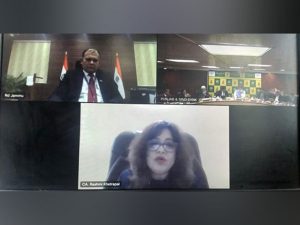
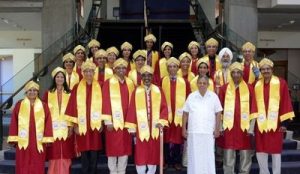

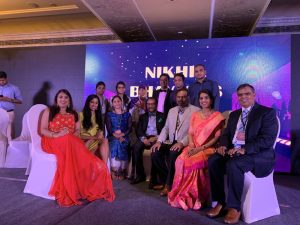
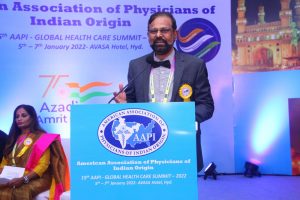
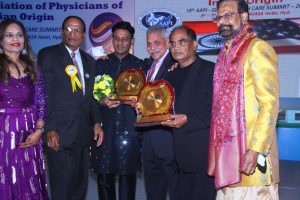
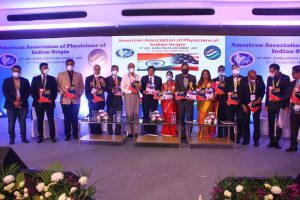
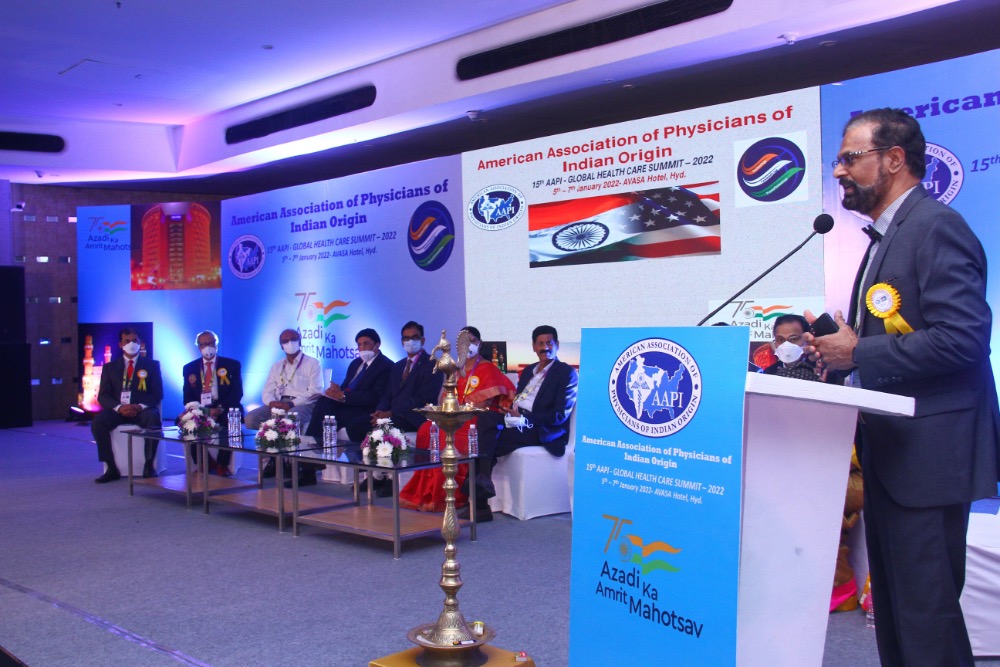
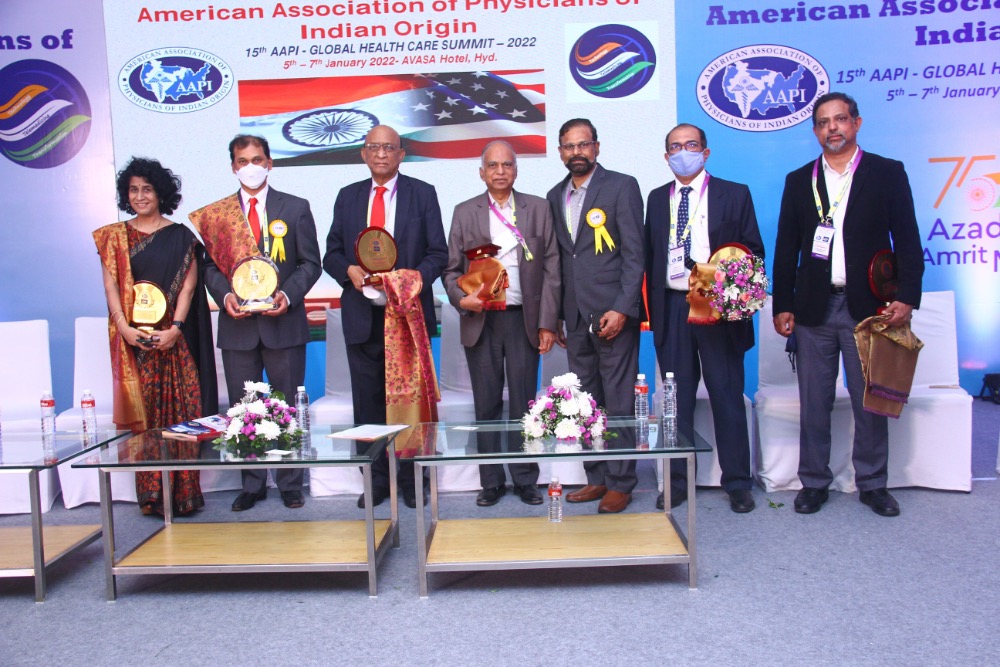
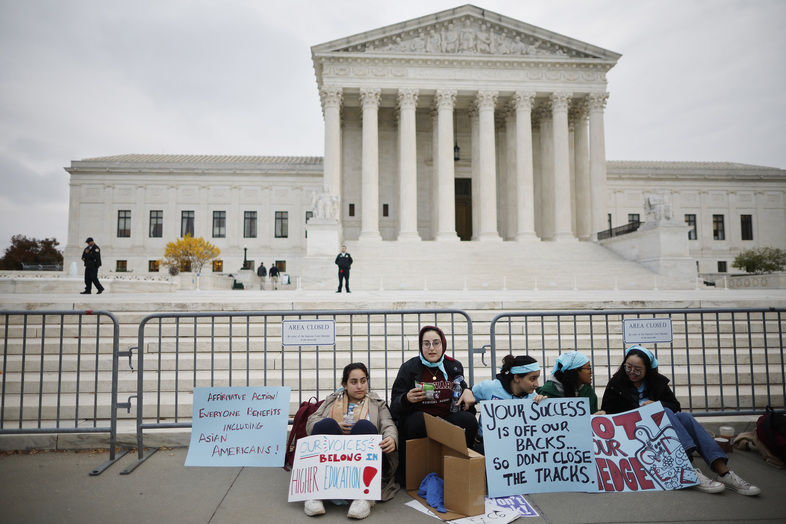
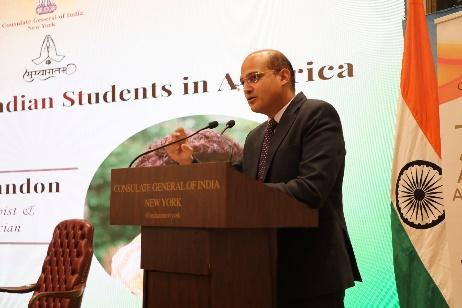
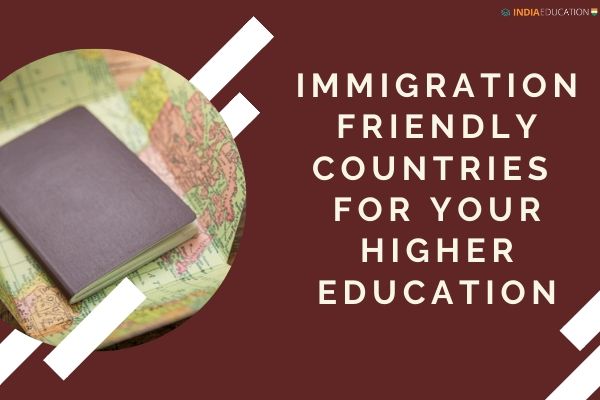 Here are some of the top Immigration-friendly countries for Indian students shared by Ajay:
Here are some of the top Immigration-friendly countries for Indian students shared by Ajay: The Education Department’s technical team will be responding to potential issues in real-time, and although the application itself won’t change, the team may make changes to the website if faced with any glitches.
The Education Department’s technical team will be responding to potential issues in real-time, and although the application itself won’t change, the team may make changes to the website if faced with any glitches. 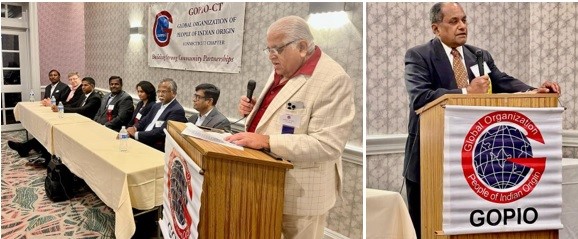 The high-profile panel included Entain CIO Joseph Simon, Eminent Software Services Managing Partner Srikanth Dasugari, Immigration Attorney David Nachman, 3Lines COO Nandu Kuppusamy, Maganti IT Resources President Prasad Maganti, eNcloud Services President Chandra Sekhar Nallam and Maganti IT Resources CTO Sushma Maganti.
The high-profile panel included Entain CIO Joseph Simon, Eminent Software Services Managing Partner Srikanth Dasugari, Immigration Attorney David Nachman, 3Lines COO Nandu Kuppusamy, Maganti IT Resources President Prasad Maganti, eNcloud Services President Chandra Sekhar Nallam and Maganti IT Resources CTO Sushma Maganti.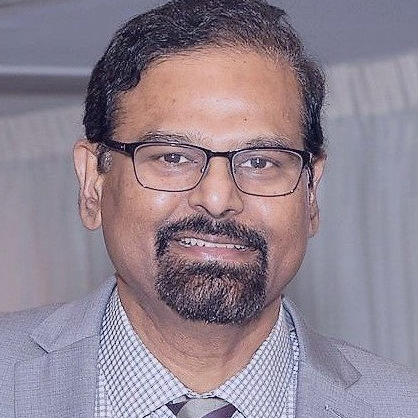 In his remarks, Dr. Ravi Kolli, President of AAPI, said,” In the context of World Heart Day on September 29th, today’s conference is being organized to educate and create awareness about the major health issue faced by South Asians and offer ways to mitigate heart disease. Dr. Kolli said, “Today’s CME is focused on Recent Advances in South Asian Heart Disease by 2 eminent Indian American physicians who are in the forefront of research and treatment of this deadly disease. It is forward-looking information focusing on cutting edge technologies that can alter the treatment from chronic care model to once and done type of innovative therapies and latest recommendation for actively screening and offering early preventive care to treat cardiovascular disease, especially among the South Asians.”
In his remarks, Dr. Ravi Kolli, President of AAPI, said,” In the context of World Heart Day on September 29th, today’s conference is being organized to educate and create awareness about the major health issue faced by South Asians and offer ways to mitigate heart disease. Dr. Kolli said, “Today’s CME is focused on Recent Advances in South Asian Heart Disease by 2 eminent Indian American physicians who are in the forefront of research and treatment of this deadly disease. It is forward-looking information focusing on cutting edge technologies that can alter the treatment from chronic care model to once and done type of innovative therapies and latest recommendation for actively screening and offering early preventive care to treat cardiovascular disease, especially among the South Asians.” 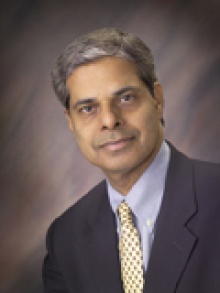 Dr. Jaideep Patel is a cardiologist in Baltimore, Maryland and is affiliated with multiple hospitals in the area, including at the Heart & Vascular Center at Johns Hopkins University, with primary focus on Preventive Cardiology, pointed out that usual risk scoring has been done on Caucasians and cannot be extrapolated to south Asians. Citing Multiethnic Study of Atherosclerosis, that he was part of Dr. Patel said,
Dr. Jaideep Patel is a cardiologist in Baltimore, Maryland and is affiliated with multiple hospitals in the area, including at the Heart & Vascular Center at Johns Hopkins University, with primary focus on Preventive Cardiology, pointed out that usual risk scoring has been done on Caucasians and cannot be extrapolated to south Asians. Citing Multiethnic Study of Atherosclerosis, that he was part of Dr. Patel said, 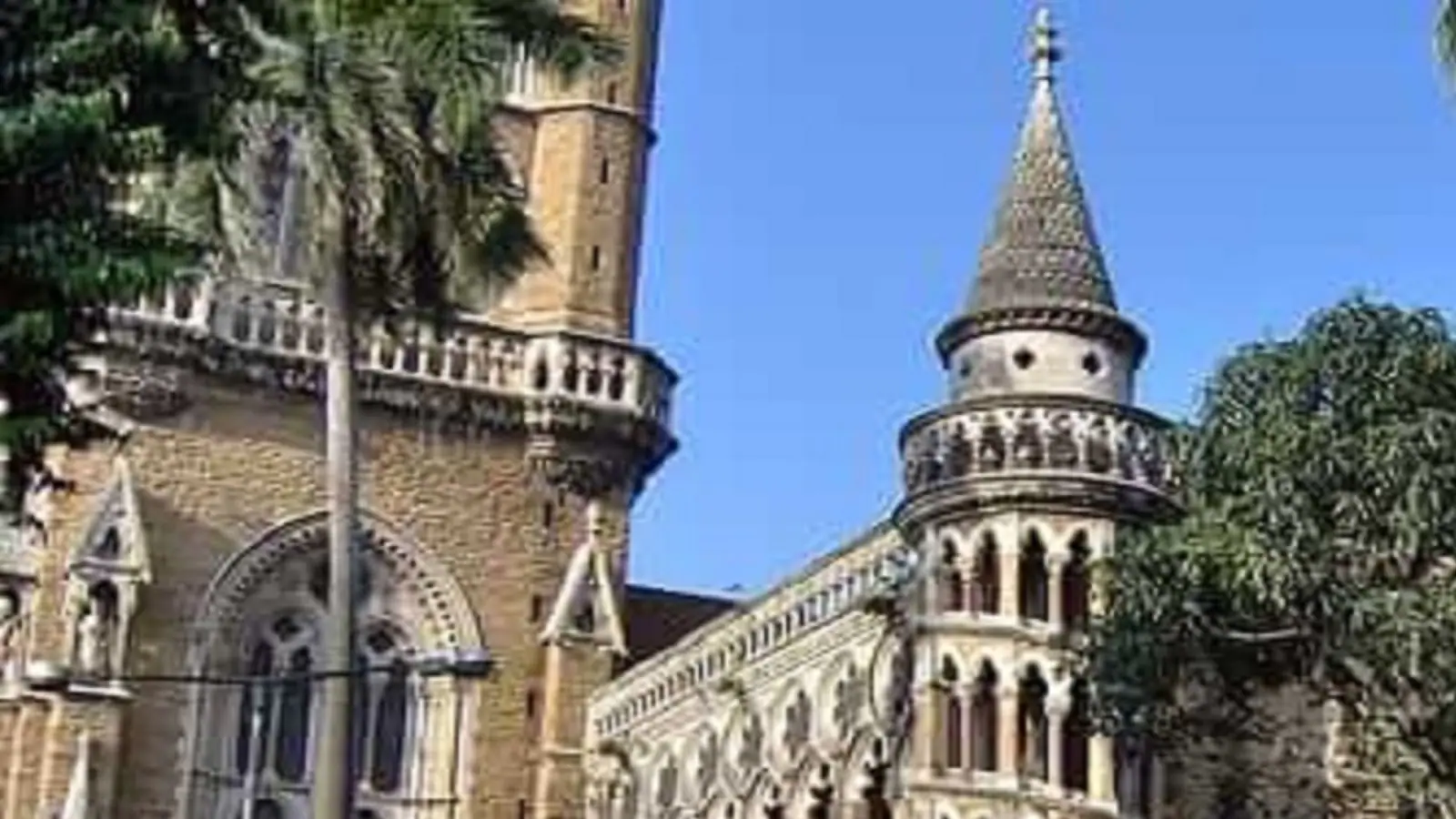 Lata Mangeshkar desired to start such a music college in memory of her father, Master Dinanath Mangeshkar, and the former Maha Vikas Aghadi government’s former Minister Aditya Thackeray had shown her the plot which she had liked.
Lata Mangeshkar desired to start such a music college in memory of her father, Master Dinanath Mangeshkar, and the former Maha Vikas Aghadi government’s former Minister Aditya Thackeray had shown her the plot which she had liked.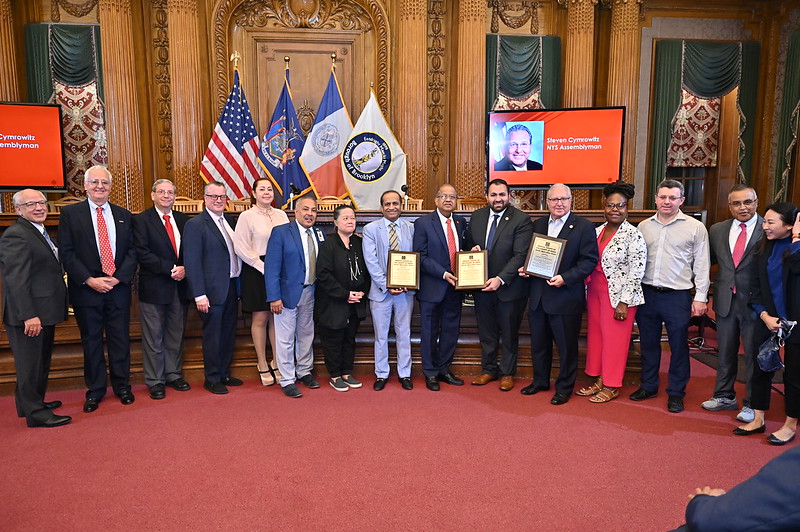


 “The combination of higher government expenditure on the provision of social services will provide higher growth in employment opportunities which will have a decisive impact in reducing poverty levels,” asserts Jalan, a former Chairman of the Prime Minister’s Economic Advisory Council, a nominated Member of Parliament from 2003-2009 and India’s representative on the Boards of the IMF and the World Bank.
“The combination of higher government expenditure on the provision of social services will provide higher growth in employment opportunities which will have a decisive impact in reducing poverty levels,” asserts Jalan, a former Chairman of the Prime Minister’s Economic Advisory Council, a nominated Member of Parliament from 2003-2009 and India’s representative on the Boards of the IMF and the World Bank.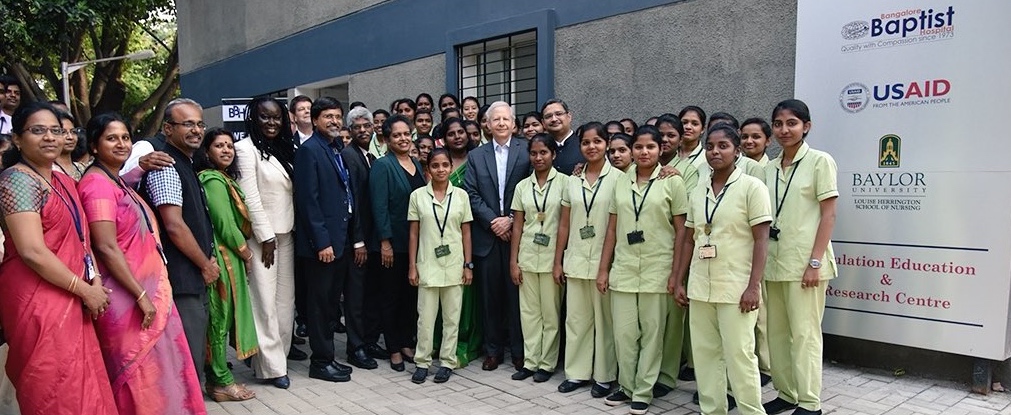 In the opening address, Dr. Suresh Garimella, President of University of Vermont, expressed hope and opportunity among the group for collaboration and progress and said, “Hundreds of millions of students must be upskilled in India and the quality of education of India is uneven and variable. Indian research, in my opinion, is primarily supported by the government while the US has a more robust system. We have to keep in mind the differences of the systems in the two countries as we discuss how to partner, there is a lot of experimentation and innovation needed. The greatest thing about the US education system are the Land-Grant acts and I am thinking, is there a version of it that can be applied in India?”
In the opening address, Dr. Suresh Garimella, President of University of Vermont, expressed hope and opportunity among the group for collaboration and progress and said, “Hundreds of millions of students must be upskilled in India and the quality of education of India is uneven and variable. Indian research, in my opinion, is primarily supported by the government while the US has a more robust system. We have to keep in mind the differences of the systems in the two countries as we discuss how to partner, there is a lot of experimentation and innovation needed. The greatest thing about the US education system are the Land-Grant acts and I am thinking, is there a version of it that can be applied in India?”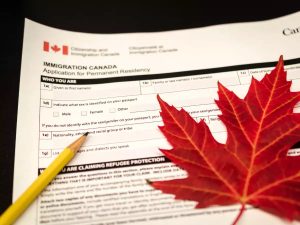 Sean Fraser, Canada’s minister of immigration, said the students would be granted an additional 18-month open work permit under the Post-Graduation Work Permit Program (PGWPP).
Sean Fraser, Canada’s minister of immigration, said the students would be granted an additional 18-month open work permit under the Post-Graduation Work Permit Program (PGWPP).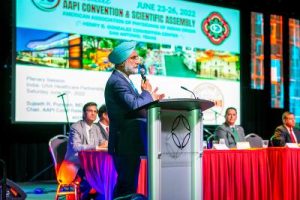 In his keynote address, Ambassador Taranjit Singh Sandhu lauded the several initiatves of AAPI over the past four decades and said, “Over the past four decades, AAPI has been doing an outstanding job in advocacy and health education. You play an important role, especially during the Covid Pandemic/” Speaking at length on the growing Indo-US relationship, the veteran diplomat said, “Over the last two decades, India and the United States have overcome the hesitations of history and fashioned a remarkable partnership, built on a bipartisan consensus in the U.S. and cross-party support in India.” Elaborating on the collaboration between India and the US, he said, “From the provision of active pharmaceutical ingredients to generic medicines that have lowered drug prices and created jobs and investments, India has demonstrated its reliability as a supply chain partner, especially as de-risking from single country supplies has become a priority.”
In his keynote address, Ambassador Taranjit Singh Sandhu lauded the several initiatves of AAPI over the past four decades and said, “Over the past four decades, AAPI has been doing an outstanding job in advocacy and health education. You play an important role, especially during the Covid Pandemic/” Speaking at length on the growing Indo-US relationship, the veteran diplomat said, “Over the last two decades, India and the United States have overcome the hesitations of history and fashioned a remarkable partnership, built on a bipartisan consensus in the U.S. and cross-party support in India.” Elaborating on the collaboration between India and the US, he said, “From the provision of active pharmaceutical ingredients to generic medicines that have lowered drug prices and created jobs and investments, India has demonstrated its reliability as a supply chain partner, especially as de-risking from single country supplies has become a priority.”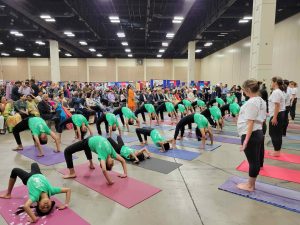
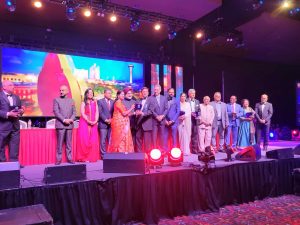 Dr. Anjana Sammadar, President-Elect , pointed out: “There was a sense of joy and relief on the faces of the over 1,000 physicians who have come together to celebrate their achievements, contributions, and to network and deepen their relationship even as the Covid Pandemic is waning and people are able to mingle freely and interact with one another cautiously.”
Dr. Anjana Sammadar, President-Elect , pointed out: “There was a sense of joy and relief on the faces of the over 1,000 physicians who have come together to celebrate their achievements, contributions, and to network and deepen their relationship even as the Covid Pandemic is waning and people are able to mingle freely and interact with one another cautiously.” 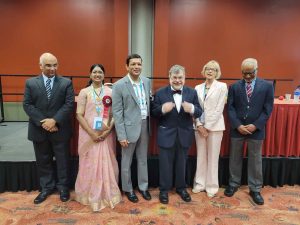
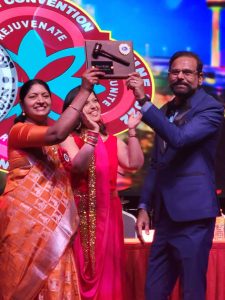
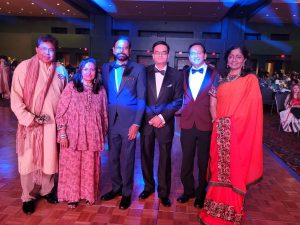 Dr. Jagan Ailinani was honored with Life Time Achievement Award. The Distinguished Physician Award was given to Dr. Vijay Yeldandi and AAPI’s Most Distinguished Award was given to Dr. Ravindra Nathan. AAPI’s Most Distinguished YPS Award was given to Dr. Sejal Hathi and the AAPI’s Most Distinguished MSRF Award was given to Aaiswariya Gulani. r. Gotimukula honored Dr. Udaya Shivangi, Dr. Sujeeth Punnam, Dr. Dwarkanath Reddy and AAPI’s Legal Advisor with Presidential Awards for their dedication and support during her presidency.
Dr. Jagan Ailinani was honored with Life Time Achievement Award. The Distinguished Physician Award was given to Dr. Vijay Yeldandi and AAPI’s Most Distinguished Award was given to Dr. Ravindra Nathan. AAPI’s Most Distinguished YPS Award was given to Dr. Sejal Hathi and the AAPI’s Most Distinguished MSRF Award was given to Aaiswariya Gulani. r. Gotimukula honored Dr. Udaya Shivangi, Dr. Sujeeth Punnam, Dr. Dwarkanath Reddy and AAPI’s Legal Advisor with Presidential Awards for their dedication and support during her presidency.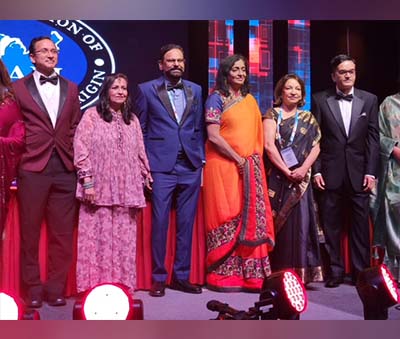 Dr. Ravi Kolli, a Board-Certified Psychiatrist with specializations in Addiction, Geriatrics, and Forensic Psychiatry, serving as the Psychiatric Medical Director of Southwestern Pennsylvania Human Services, was a Clinical Assistant Professor of Psychiatry at the University of Pittsburgh and West Virginia University. Dr. Kolli has over four decades of experience in the healthcare field. He graduated from Rangaraya Medical College, NTR University of Health Sciences Medical School in 1981. He is affiliated with medical facilities at the Washington Health System Greene and Washington Hospital.
Dr. Ravi Kolli, a Board-Certified Psychiatrist with specializations in Addiction, Geriatrics, and Forensic Psychiatry, serving as the Psychiatric Medical Director of Southwestern Pennsylvania Human Services, was a Clinical Assistant Professor of Psychiatry at the University of Pittsburgh and West Virginia University. Dr. Kolli has over four decades of experience in the healthcare field. He graduated from Rangaraya Medical College, NTR University of Health Sciences Medical School in 1981. He is affiliated with medical facilities at the Washington Health System Greene and Washington Hospital. Recognizing that this new role as the President of AAPI comes with greater role to serve the members and the larger society with diligence, Dr. Kolli quoted the “ancient as well as eternal facts and values: Uncle Ben’s advice to Peter Parker “With great power comes great responsibility,” and quoting the Bible, “To whomever much is given, of him will much be required; and to whom much was entrusted, of him more will be asked.” Our Dharma says “Karmanye Vadika raste mapaleshu Kadachana.”
Recognizing that this new role as the President of AAPI comes with greater role to serve the members and the larger society with diligence, Dr. Kolli quoted the “ancient as well as eternal facts and values: Uncle Ben’s advice to Peter Parker “With great power comes great responsibility,” and quoting the Bible, “To whomever much is given, of him will much be required; and to whom much was entrusted, of him more will be asked.” Our Dharma says “Karmanye Vadika raste mapaleshu Kadachana.”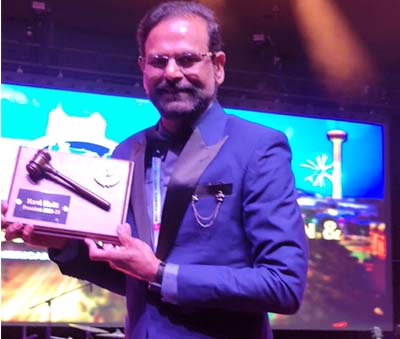 Recalling how his association with AAPI and leadership responsibilities started in Pittsburgh with the TAPI team a couple of decades ago, Dr. Kolli said, “It has been an exciting experience as well as an enriching one, as I traveled all over the USA attending the events of many chapters of our AAPI and had the privilege of meeting so many brilliant and wonderful leaders and members of AAPI across the length and breadth of this great and beautiful country. I thank all my friends, colleagues, leaders and mentors for your constant love and encouragement. I could not have been here without you.”
Recalling how his association with AAPI and leadership responsibilities started in Pittsburgh with the TAPI team a couple of decades ago, Dr. Kolli said, “It has been an exciting experience as well as an enriching one, as I traveled all over the USA attending the events of many chapters of our AAPI and had the privilege of meeting so many brilliant and wonderful leaders and members of AAPI across the length and breadth of this great and beautiful country. I thank all my friends, colleagues, leaders and mentors for your constant love and encouragement. I could not have been here without you.”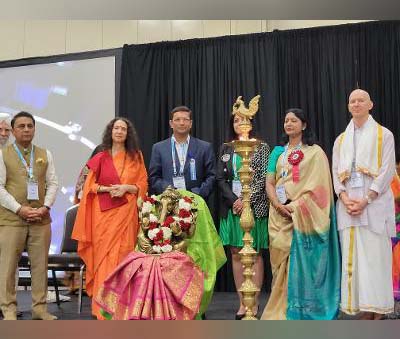 Dr. Anupama Gotimukula, the Immediate Past President of AAPI said, “Our leadership team has worked diligently on so many wonderful projects and activities including educational, philanthropic, legislative, networking, and many more activities benefitting our members and communities. This has been possible because of the incredible work and support from the dedicated team of leaders, members, and our supporting office staff,” the only 4th woman President of AAPI in the four decades long history of AAPI, said.
Dr. Anupama Gotimukula, the Immediate Past President of AAPI said, “Our leadership team has worked diligently on so many wonderful projects and activities including educational, philanthropic, legislative, networking, and many more activities benefitting our members and communities. This has been possible because of the incredible work and support from the dedicated team of leaders, members, and our supporting office staff,” the only 4th woman President of AAPI in the four decades long history of AAPI, said.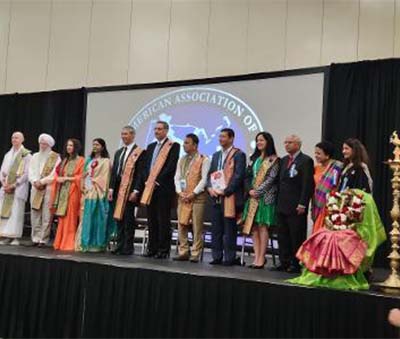 Dr. V. Ranga in his address he said, “My goal in the coming year is to formalize and create AAPI leadership academy working with executives from American College of Physicians for the development of leadership roles for all AAPI members. I want to work hard to engage young physicians and attract them to AAPI. They are the future of AAPI.”
Dr. V. Ranga in his address he said, “My goal in the coming year is to formalize and create AAPI leadership academy working with executives from American College of Physicians for the development of leadership roles for all AAPI members. I want to work hard to engage young physicians and attract them to AAPI. They are the future of AAPI.” In his keynote address, Ambassador Taranjit Singh Sandhu lauded the several initiatves of AAPI over the past four decades and said, “Over the past four decades, AAPI has been doing an outstanding job in advocacy and health education. You play an important role, especially during the Covid Pandemic/” Speaking at length on the growing Indo-US relationship, the veteran diplomat said, “Over the last two decades, India and the United States have overcome the hesitations of history and fashioned a remarkable partnership, built on a bipartisan consensus in the U.S. and cross-party support in India.” Elaborating on the collaboration between India and the US, he said, “From the provision of active pharmaceutical ingredients to generic medicines that have lowered drug prices and created jobs and investments, India has demonstrated its reliability as a supply chain partner, especially as de-risking from single country supplies has become a priority.”
In his keynote address, Ambassador Taranjit Singh Sandhu lauded the several initiatves of AAPI over the past four decades and said, “Over the past four decades, AAPI has been doing an outstanding job in advocacy and health education. You play an important role, especially during the Covid Pandemic/” Speaking at length on the growing Indo-US relationship, the veteran diplomat said, “Over the last two decades, India and the United States have overcome the hesitations of history and fashioned a remarkable partnership, built on a bipartisan consensus in the U.S. and cross-party support in India.” Elaborating on the collaboration between India and the US, he said, “From the provision of active pharmaceutical ingredients to generic medicines that have lowered drug prices and created jobs and investments, India has demonstrated its reliability as a supply chain partner, especially as de-risking from single country supplies has become a priority.”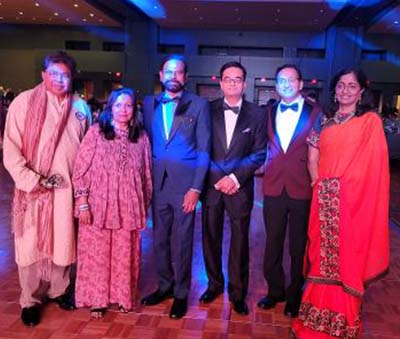 Dozens of local children from ages 8 to 16, trained by Yoga Masters in San Antonio by presenting and demonstrating multiple Yoga Aasanas to the tune of Vande Mataram provided valuable education on Yoga and its importance in life. Every evening the popular AAPI Got Talent and
Dozens of local children from ages 8 to 16, trained by Yoga Masters in San Antonio by presenting and demonstrating multiple Yoga Aasanas to the tune of Vande Mataram provided valuable education on Yoga and its importance in life. Every evening the popular AAPI Got Talent and Envisioned and built against the backdrop of COVID-19 challenges that stretched our health care system to the brink, including increased physician
Envisioned and built against the backdrop of COVID-19 challenges that stretched our health care system to the brink, including increased physician 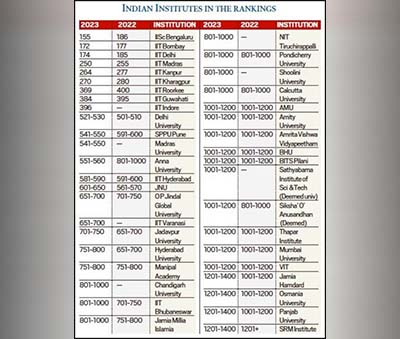 Among the eight public IoEs, five (IISc, IIT-B, IIT-D, IIT-Madras and IIT-Kharagpur) improved their rankings, while the University of Delhi and University of Hyderabad slipped from band 501-510 to 521-530 and 651-700 to 751-800, respectively.
Among the eight public IoEs, five (IISc, IIT-B, IIT-D, IIT-Madras and IIT-Kharagpur) improved their rankings, while the University of Delhi and University of Hyderabad slipped from band 501-510 to 521-530 and 651-700 to 751-800, respectively.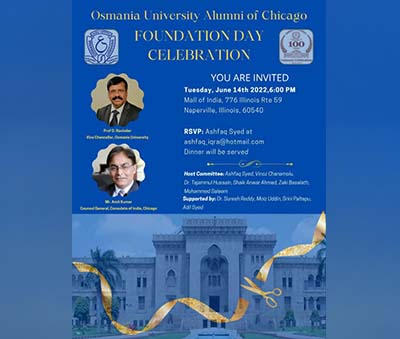 Established over 100 years ago, Osmania University is the seventh oldest in India and the third oldest in South India. It is a multi-faculty and multidisciplinary university, offering rich and varied courses in the faculties of Arts, Sciences, Social Sciences, Law, Education, Engineering, Technology, Commerce, Management, Informatics, Pharmacy, and Oriental Languages.
Established over 100 years ago, Osmania University is the seventh oldest in India and the third oldest in South India. It is a multi-faculty and multidisciplinary university, offering rich and varied courses in the faculties of Arts, Sciences, Social Sciences, Law, Education, Engineering, Technology, Commerce, Management, Informatics, Pharmacy, and Oriental Languages.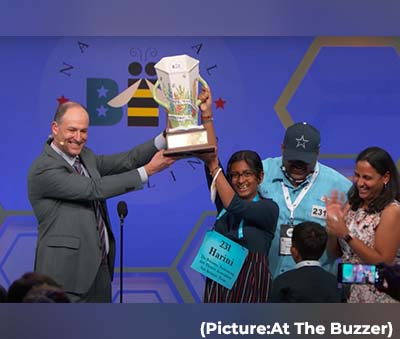 Although she missed a few words, Harini said she knew all the ones she spelled correctly. As for her speedy spelling strategy, she said she “did practice for the spell-off a bit,” but in the end the secret to her success was to “go in fast would [and] really just be focusing on the word, just reading all of the information as quick as I could and keep on going.”
Although she missed a few words, Harini said she knew all the ones she spelled correctly. As for her speedy spelling strategy, she said she “did practice for the spell-off a bit,” but in the end the secret to her success was to “go in fast would [and] really just be focusing on the word, just reading all of the information as quick as I could and keep on going.” “Congratulations Fr. Mathew Chalil for being inducted into Nova Southeastern University Cornerstone society today,” a statement issued by the University stated. “We have created a scholarship fund of 1 Lakh Dollars (77 Lakhs Indian Rupees). The $100,000 scholarship will be earmarked for international medical students at NSU MD with significant financial needs.”
“Congratulations Fr. Mathew Chalil for being inducted into Nova Southeastern University Cornerstone society today,” a statement issued by the University stated. “We have created a scholarship fund of 1 Lakh Dollars (77 Lakhs Indian Rupees). The $100,000 scholarship will be earmarked for international medical students at NSU MD with significant financial needs.” Publisher of The Universal News Network (
Publisher of The Universal News Network (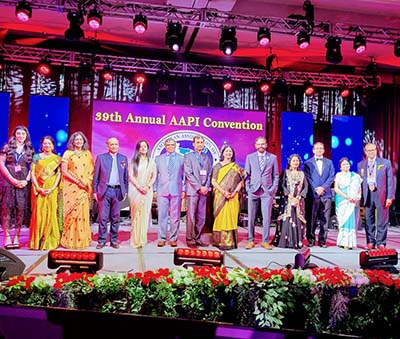 Put together by a highly talented and dedicated Team of Convention Committee members, the 4 days long event will be filled with programs and activities that cater to the body, mind and soul. The Convention is going to be a unique experience for everyone, he added.
Put together by a highly talented and dedicated Team of Convention Committee members, the 4 days long event will be filled with programs and activities that cater to the body, mind and soul. The Convention is going to be a unique experience for everyone, he added.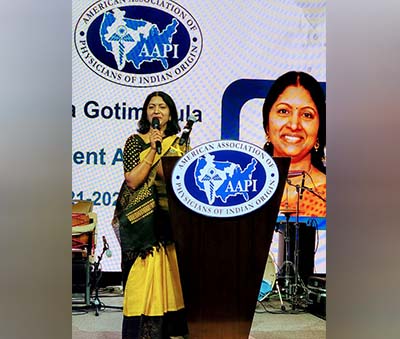 Saturday Evening will begin with the Presidential Banquet, which will be followed by a live show by Bollywood’s one of the best “Shaan” Night. Sunday, we bid you “Hasta la Vista” with a closing ceremony,” said Dr. Vijay Koli, Advisor to the Convention.
Saturday Evening will begin with the Presidential Banquet, which will be followed by a live show by Bollywood’s one of the best “Shaan” Night. Sunday, we bid you “Hasta la Vista” with a closing ceremony,” said Dr. Vijay Koli, Advisor to the Convention.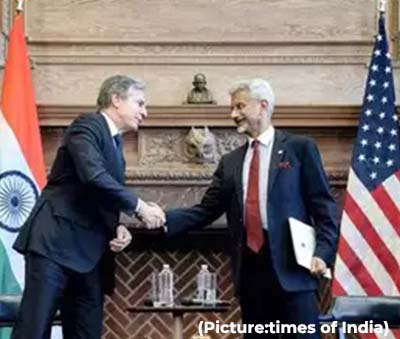 Near the end of the trip, Thurman met with Mahatma Gandhi. They talked, the books record, for about three hours, covering a wide range of issues: segregation, faith, nonviolent resistance. The conversation and the trip made a lasting impression on Thurman. So when he came back to Howard, he developed his interpretation of nonviolence – not as a political tactic, but as a spiritual lifestyle. He shared his views with sermons, speeches, and eventually what came to be an incredibly influential book, Jesus and the Disinherited.
Near the end of the trip, Thurman met with Mahatma Gandhi. They talked, the books record, for about three hours, covering a wide range of issues: segregation, faith, nonviolent resistance. The conversation and the trip made a lasting impression on Thurman. So when he came back to Howard, he developed his interpretation of nonviolence – not as a political tactic, but as a spiritual lifestyle. He shared his views with sermons, speeches, and eventually what came to be an incredibly influential book, Jesus and the Disinherited.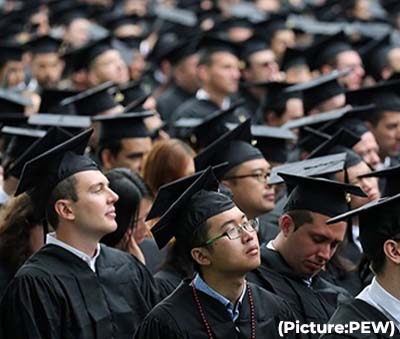 Here are key facts about American college graduates.
Here are key facts about American college graduates.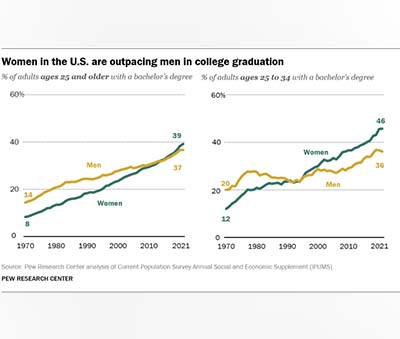 In an
In an 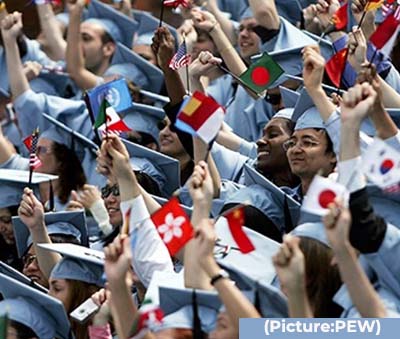 For prospective international students, the past two years have posed intense challenges. The public health crisis disrupted travel worldwide in 2020 and 2021 and threw college enrollment plans into chaos.
For prospective international students, the past two years have posed intense challenges. The public health crisis disrupted travel worldwide in 2020 and 2021 and threw college enrollment plans into chaos.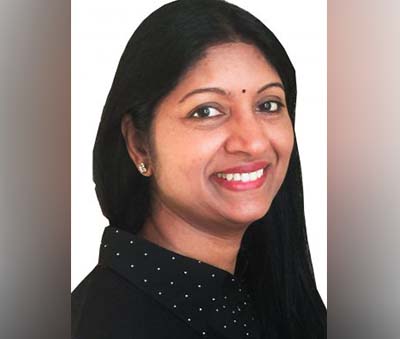 “The Convention this year is one day short. It begins on Thursday, June 23rd with the Texas Style boots and belts with TexMex Theme,” informed Venky Adivi, Chief Executive Officer. “Please get your Sombrero (Mexican Hat) ready for a special evening organized by Texas Indo- American Physician Society (SW Chapter),” said Dr. Vijay Koli, Advisor to the Convention.
“The Convention this year is one day short. It begins on Thursday, June 23rd with the Texas Style boots and belts with TexMex Theme,” informed Venky Adivi, Chief Executive Officer. “Please get your Sombrero (Mexican Hat) ready for a special evening organized by Texas Indo- American Physician Society (SW Chapter),” said Dr. Vijay Koli, Advisor to the Convention.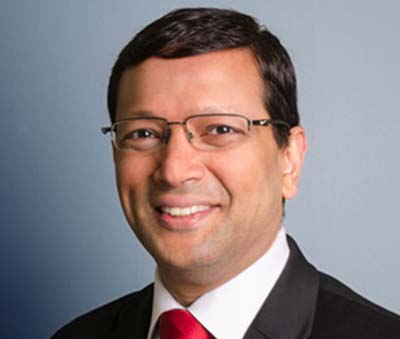 The confirmed Plenary Speakers are Dr. Jack Reseneck, AMA President, and Dr.Peter Hotez, Nobel Prize Nominee. Other confirmed guests are legendary Sunil Gavaskar and Dr. Rahul Gupta, Director, National Drug Control Policy, World-renowned spiritual leader Sadhvi Saraswati and Dr. Prem Reddy, CEO of Prime Health Services.
The confirmed Plenary Speakers are Dr. Jack Reseneck, AMA President, and Dr.Peter Hotez, Nobel Prize Nominee. Other confirmed guests are legendary Sunil Gavaskar and Dr. Rahul Gupta, Director, National Drug Control Policy, World-renowned spiritual leader Sadhvi Saraswati and Dr. Prem Reddy, CEO of Prime Health Services.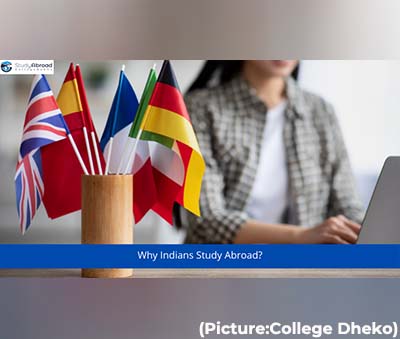 Canada’s Post-Graduation Work Permit Program (PGWPP), America’s Optional Training Program (OPT) and Britain’s New Graduate Pathway (GR) offer opportunities for good placements after postgraduation which are a major attraction among Indian students to advance their career.
Canada’s Post-Graduation Work Permit Program (PGWPP), America’s Optional Training Program (OPT) and Britain’s New Graduate Pathway (GR) offer opportunities for good placements after postgraduation which are a major attraction among Indian students to advance their career. According to Maya Varadaraj, “This exhibition is a love letter to myself, my life, my family, and the moments that have led me here. My work is analytical, though in this case, I’ve turned my focus inward. Experiencing all the aspects of womanhood, its glory, and its upset, has me analyzing the characteristic pain and tribulations tied so critically to being female. As women, our intense ordeals could, perhaps, be explained by our biologies, societies, histories, and families. In my particular case as a South Asian woman brought up in a Hindu family, a lot of my experiences can be made reasonable through philosophies from Eastern thought. Karma, for example, the belief that actions from the past or ancestral baggage lead to present experiences.
According to Maya Varadaraj, “This exhibition is a love letter to myself, my life, my family, and the moments that have led me here. My work is analytical, though in this case, I’ve turned my focus inward. Experiencing all the aspects of womanhood, its glory, and its upset, has me analyzing the characteristic pain and tribulations tied so critically to being female. As women, our intense ordeals could, perhaps, be explained by our biologies, societies, histories, and families. In my particular case as a South Asian woman brought up in a Hindu family, a lot of my experiences can be made reasonable through philosophies from Eastern thought. Karma, for example, the belief that actions from the past or ancestral baggage lead to present experiences.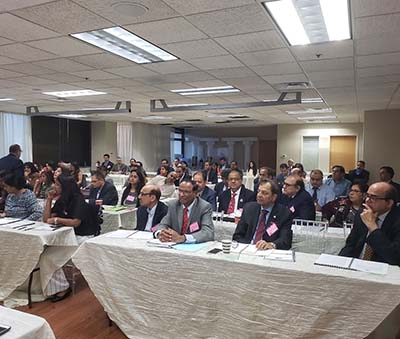 “The CME sessions will provide comprehensive and current reviews and guidelines for the diagnosis and treatment of various disease states to reduce morbidity and mortality and achieve cost-effective quality care outcomes, said Dr. Bansal. “At the end of the activity, it is expected that attendees will gain an understanding of the causation, diagnosis and the best clinical practices for the management of the diverse group of diseases discussed during this program.”
“The CME sessions will provide comprehensive and current reviews and guidelines for the diagnosis and treatment of various disease states to reduce morbidity and mortality and achieve cost-effective quality care outcomes, said Dr. Bansal. “At the end of the activity, it is expected that attendees will gain an understanding of the causation, diagnosis and the best clinical practices for the management of the diverse group of diseases discussed during this program.”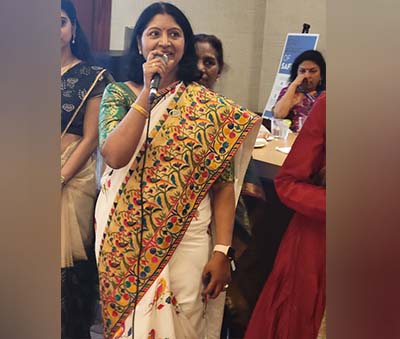 With the ever-changing trends in healthcare, AAPI delegates will be provided with education in the session called “Navigating Successful Medicine Practice in the US.” This session includes topic like “Physician Employment Contracts and Non-Competes: What you really need to know”. “Navigating ACOs: Regulations, Payment and Compliance” will be covered by Dr. Jay Bhatt. “Crucial conversations: supervising midlevel providers” will be addressed by Dr. Robert Leverence.
With the ever-changing trends in healthcare, AAPI delegates will be provided with education in the session called “Navigating Successful Medicine Practice in the US.” This session includes topic like “Physician Employment Contracts and Non-Competes: What you really need to know”. “Navigating ACOs: Regulations, Payment and Compliance” will be covered by Dr. Jay Bhatt. “Crucial conversations: supervising midlevel providers” will be addressed by Dr. Robert Leverence. Murphy said in his March 18th announcement: “This online, 30-credit graduate degree is an interdisciplinary program designed for leaders who are committed to personal, interpersonal, organizational, and societal happiness. Grounded in science and research, this new degree will study happiness and resilience to prepare graduates to make an impact in a wide range of fields.”
Murphy said in his March 18th announcement: “This online, 30-credit graduate degree is an interdisciplinary program designed for leaders who are committed to personal, interpersonal, organizational, and societal happiness. Grounded in science and research, this new degree will study happiness and resilience to prepare graduates to make an impact in a wide range of fields.”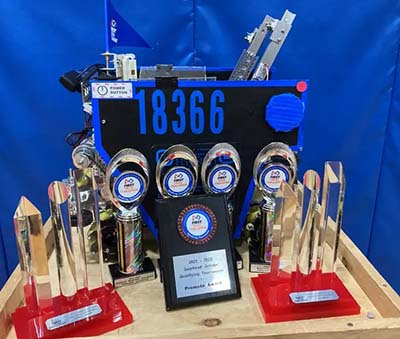 Incorporated in 1797, Trumbull town was named after Governor Jonathan Trumbull of Lebanon, Connecticut. Located 5 miles north from the Long Island Sound, among the most virant towens in the Fairfield County in the state of Connecticut, this vibrant community offers New England charm with extensive retail, outdoor recreation, and dining options. Known for its diversity, Trumbull has a fast growing Indian American community, which excels in academia with the students of Indian American parents rank among the highest in educational achiements.
Incorporated in 1797, Trumbull town was named after Governor Jonathan Trumbull of Lebanon, Connecticut. Located 5 miles north from the Long Island Sound, among the most virant towens in the Fairfield County in the state of Connecticut, this vibrant community offers New England charm with extensive retail, outdoor recreation, and dining options. Known for its diversity, Trumbull has a fast growing Indian American community, which excels in academia with the students of Indian American parents rank among the highest in educational achiements.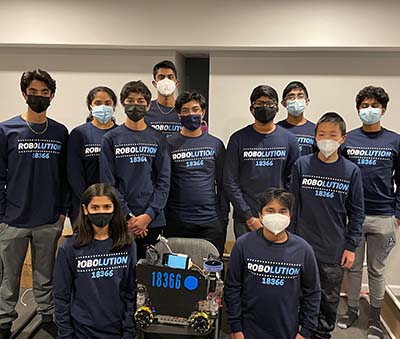 Trumbull Robotics Team won the 1st 1st place at Connect Award, which “is given to the team that most connects with their local science, technology, engineering, and math (STEM) community. We were recognized for helping our local community connect with STEM and actively helping our local community explore opportunities available in STEM.”
Trumbull Robotics Team won the 1st 1st place at Connect Award, which “is given to the team that most connects with their local science, technology, engineering, and math (STEM) community. We were recognized for helping our local community connect with STEM and actively helping our local community explore opportunities available in STEM.”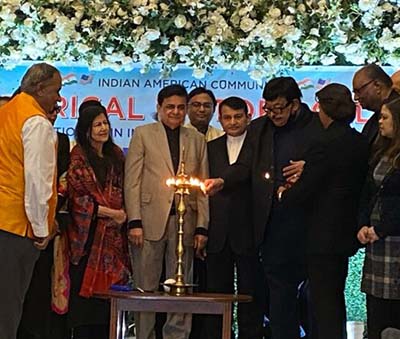 “Team Robolution had a very successful day at the CT State Championship on February 26th, 2022, winning first place for both the Connect and the Promote Award and second place for the Inspire Award. In addition to the team’s achievements, junior Aarav Parekh was one of two individuals in the state nominated as a 2022 Dean’s List Finalist. Robolution’s success has qualified them as one of the two teams to represent the state of Connecticut at the FTC World Championship in Houston this April,” the Team’s website stated.
“Team Robolution had a very successful day at the CT State Championship on February 26th, 2022, winning first place for both the Connect and the Promote Award and second place for the Inspire Award. In addition to the team’s achievements, junior Aarav Parekh was one of two individuals in the state nominated as a 2022 Dean’s List Finalist. Robolution’s success has qualified them as one of the two teams to represent the state of Connecticut at the FTC World Championship in Houston this April,” the Team’s website stated.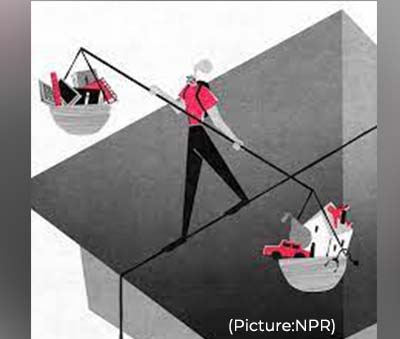 Even Senate Majority Leader Chuck Schumer has made things uncomfortable for Biden. After Klain’s comments became public,
Even Senate Majority Leader Chuck Schumer has made things uncomfortable for Biden. After Klain’s comments became public, 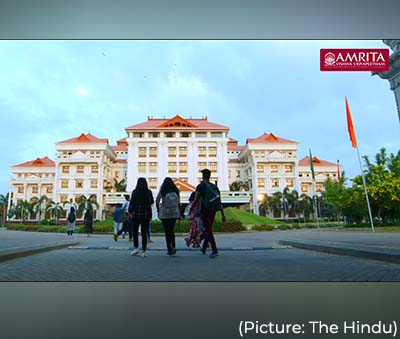 But if you step inside these campuses and peer into the minds of the people who work, teach and learn here, there is something that is distinctly common running through all of them. It is a set of values, beliefs, and practices, all at once.
But if you step inside these campuses and peer into the minds of the people who work, teach and learn here, there is something that is distinctly common running through all of them. It is a set of values, beliefs, and practices, all at once.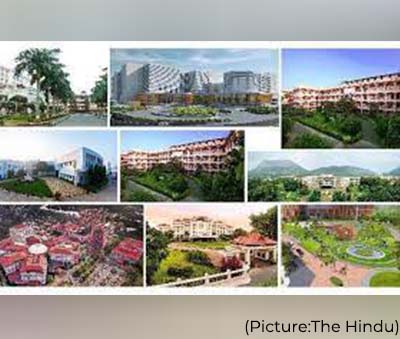 The Wireless Sensor Network for Landslide Detection, for example, is a low-cost system that integrates knowledge from multiple domains earth science, communication & networking, analog and digital circuits, to name a few. The system has been designed to detect landslides twenty-four hours ahead of time. It has received a U.S patent, and the university, as a result, is now officially recognized as a World Centre of Excellence for Disaster Risk Reduction.
The Wireless Sensor Network for Landslide Detection, for example, is a low-cost system that integrates knowledge from multiple domains earth science, communication & networking, analog and digital circuits, to name a few. The system has been designed to detect landslides twenty-four hours ahead of time. It has received a U.S patent, and the university, as a result, is now officially recognized as a World Centre of Excellence for Disaster Risk Reduction. The International Women’s Day is celebrated across the world to honor the remarkable hard work and achievements of women in every field. This extraordinary event also acknowledged women’s empowerment by honoring the significant efforts of women to make the world a better place to live in. A life of dignity is the birthright of every woman. Women’s empowerment is key to advancing the development of every country. Empowered women contribute to the health and productivity of whole families and communities and improved prospects for the next generation.
The International Women’s Day is celebrated across the world to honor the remarkable hard work and achievements of women in every field. This extraordinary event also acknowledged women’s empowerment by honoring the significant efforts of women to make the world a better place to live in. A life of dignity is the birthright of every woman. Women’s empowerment is key to advancing the development of every country. Empowered women contribute to the health and productivity of whole families and communities and improved prospects for the next generation.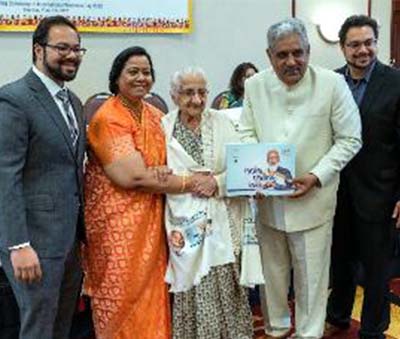 Mrs. Kumar has provided a broad framework for collective action for senior citizens to nurture their innate talents, enrich their groundbreaking ideas and engage in innovative experiences which has become a global model. She has achieved this by providing critically needed services to multiethnic senior citizen population especially the Indian diaspora with employment opportunities, creating more than 10,000 jobs per year, homecare services to over 10,000 homebound seniors mostly Indian diaspora every year by integrating state of art technology with a human touch in this digital age. Her model of service is being replicated in several parts of the world including India.
Mrs. Kumar has provided a broad framework for collective action for senior citizens to nurture their innate talents, enrich their groundbreaking ideas and engage in innovative experiences which has become a global model. She has achieved this by providing critically needed services to multiethnic senior citizen population especially the Indian diaspora with employment opportunities, creating more than 10,000 jobs per year, homecare services to over 10,000 homebound seniors mostly Indian diaspora every year by integrating state of art technology with a human touch in this digital age. Her model of service is being replicated in several parts of the world including India. The WHO GCTM will be established in Jamnagar under the Ministry of AYUSH. A Joint Task Force (JTF) is constituted for coordination, execution and monitoring of activities for the establishment of this Centre.
The WHO GCTM will be established in Jamnagar under the Ministry of AYUSH. A Joint Task Force (JTF) is constituted for coordination, execution and monitoring of activities for the establishment of this Centre. Community leaders during the meeting appreciated India’s efforts, but also raised questions and concerns including why India has yet to take a firm position on the Ukraine issue. They raised questions around India’s decision to abstain from voting at the United Nations Security Council (UNSC), lack of initiating a mandatory evacuation of its citizens prior to the start of the war, discrimination and harassment faced by Indian students at Ukraine’s borders citing media reports and social media posts, role of community leaders in assisting India respond to the crisis, India’s role in de-escalating tensions between Russia and Ukraine, and how to respond to members of US Congress and local US officials about India’s stand on the issue of Ukraine. Community leaders have also requested Dr. Kulkarni to convey their concerns to the Indian Government to ensure the protection of Indian citizens.
Community leaders during the meeting appreciated India’s efforts, but also raised questions and concerns including why India has yet to take a firm position on the Ukraine issue. They raised questions around India’s decision to abstain from voting at the United Nations Security Council (UNSC), lack of initiating a mandatory evacuation of its citizens prior to the start of the war, discrimination and harassment faced by Indian students at Ukraine’s borders citing media reports and social media posts, role of community leaders in assisting India respond to the crisis, India’s role in de-escalating tensions between Russia and Ukraine, and how to respond to members of US Congress and local US officials about India’s stand on the issue of Ukraine. Community leaders have also requested Dr. Kulkarni to convey their concerns to the Indian Government to ensure the protection of Indian citizens.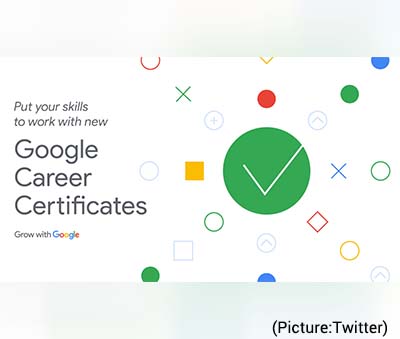 Nearly 70,000 Americans have completed Google Career Certificates to date. “They are available to anyone, no college degree required. Seventy-five percent of graduates report seeing a positive impact on their career within six months, including a raise or a new job,” Pichai added.
Nearly 70,000 Americans have completed Google Career Certificates to date. “They are available to anyone, no college degree required. Seventy-five percent of graduates report seeing a positive impact on their career within six months, including a raise or a new job,” Pichai added.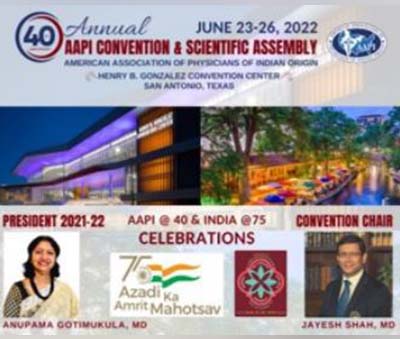 “The presence of Dr. Hotez, a University Professor at Baylor University, Fellow in Disease and Poverty at the James A Baker III Institute for Public Policy, Senior Fellow at the Scowcroft Institute of International Affairs at Texas A&M University, Faculty Fellow with the Hagler Institute for Advanced Studies at Texas A&M University, and Health Policy Scholar in the Baylor Center for Medical Ethics and Health Policy, and a True Friend of India at the AAPI Convention is a way for us, Physicians of Indian Origin to honor a legendary and celebrated champion of vaccines, who has developed vaccines for tropical diseases that afflict the world’s poorest people as he has devoted his skills, knowledge and experiences to help the world defeat COVID-19,” said Dr. Jayesh Shah, past President of AAPI and Chair of AAPI Convention 2022.
“The presence of Dr. Hotez, a University Professor at Baylor University, Fellow in Disease and Poverty at the James A Baker III Institute for Public Policy, Senior Fellow at the Scowcroft Institute of International Affairs at Texas A&M University, Faculty Fellow with the Hagler Institute for Advanced Studies at Texas A&M University, and Health Policy Scholar in the Baylor Center for Medical Ethics and Health Policy, and a True Friend of India at the AAPI Convention is a way for us, Physicians of Indian Origin to honor a legendary and celebrated champion of vaccines, who has developed vaccines for tropical diseases that afflict the world’s poorest people as he has devoted his skills, knowledge and experiences to help the world defeat COVID-19,” said Dr. Jayesh Shah, past President of AAPI and Chair of AAPI Convention 2022.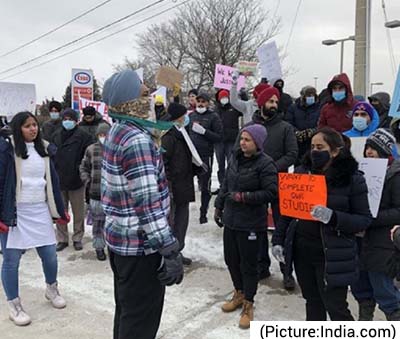 The abrupt school closures prompted scores of panicking international students from India to flock to the Indian High Commission in Ottawa for assistance, as many of them had been forced to come up with thousands of dollars in fees without warning, only to have their education halted.
The abrupt school closures prompted scores of panicking international students from India to flock to the Indian High Commission in Ottawa for assistance, as many of them had been forced to come up with thousands of dollars in fees without warning, only to have their education halted. Exempting individuals with Ph.D.s in STEM fields from annual green card limits would relieve many from long wait times for permanent residence and (indirectly) reduce the decades-long waits for other highly skilled immigrants. The provision would allow U.S. employers to gain a significant competitive edge by offering the chance at permanent residence to outstanding researchers from around the world, including those early in their careers and engaging in cutting-edge work. (See
Exempting individuals with Ph.D.s in STEM fields from annual green card limits would relieve many from long wait times for permanent residence and (indirectly) reduce the decades-long waits for other highly skilled immigrants. The provision would allow U.S. employers to gain a significant competitive edge by offering the chance at permanent residence to outstanding researchers from around the world, including those early in their careers and engaging in cutting-edge work. (See 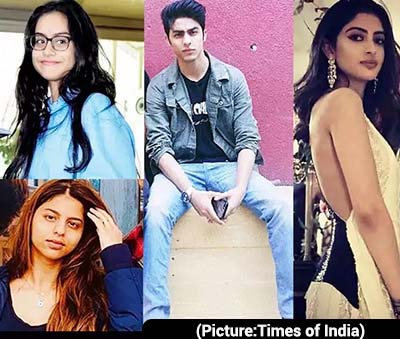 The 6-month acting course is designed such that students inculcate a sense of confidence and effortlessly act in front of the camera, get a good command over spoken language with a flawless dialogue delivery; master facial expressions, develop good body language and flexibility; develop the essential skills of observation, imagination, sense and emotion memories; ability to improvise; master movement with special focus on dancing abilities to improvise; and the fundamentals of action choreography.
The 6-month acting course is designed such that students inculcate a sense of confidence and effortlessly act in front of the camera, get a good command over spoken language with a flawless dialogue delivery; master facial expressions, develop good body language and flexibility; develop the essential skills of observation, imagination, sense and emotion memories; ability to improvise; master movement with special focus on dancing abilities to improvise; and the fundamentals of action choreography.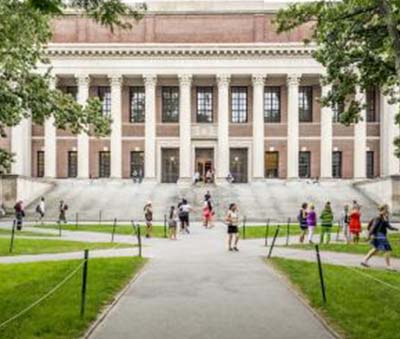 The committee, headed by IIT Council Standing Committee Chairman Dr K Radhakrishnan, has been asked to “submit a framework/structure for the opening of campuses abroad by Higher Education Institutes after examining the existing provisions for the opening of offshore campuses” by March 17.
The committee, headed by IIT Council Standing Committee Chairman Dr K Radhakrishnan, has been asked to “submit a framework/structure for the opening of campuses abroad by Higher Education Institutes after examining the existing provisions for the opening of offshore campuses” by March 17. Lydia pressed her parents all year to allow her to take the intelligence test, which she finally took during her school break. Sebastian completely downplayed the super tough exam–going so far as to call it “easy.” “At first, I was really nervous but once I started, it was much easier than I expected it to be and then I relaxed, she said. “I gave it my best shot really.”
Lydia pressed her parents all year to allow her to take the intelligence test, which she finally took during her school break. Sebastian completely downplayed the super tough exam–going so far as to call it “easy.” “At first, I was really nervous but once I started, it was much easier than I expected it to be and then I relaxed, she said. “I gave it my best shot really.” “Harvard celebrates and nurtures individuality as intensely as this nation. Those who challenge our admissions policies would ask us to rely upon a process far more mechanistic, a process far more reliant on simple assessments of objective criteria. Each of us is, however, more than our numbers, more than our grades, more than our rankings or scores.
“Harvard celebrates and nurtures individuality as intensely as this nation. Those who challenge our admissions policies would ask us to rely upon a process far more mechanistic, a process far more reliant on simple assessments of objective criteria. Each of us is, however, more than our numbers, more than our grades, more than our rankings or scores. “Grutter is wrong, immoral, and unpersuasive, and has not aged well,” argued the group, Students for Fair Admissions, run by longtime preferences opponent Edward Blum.
“Grutter is wrong, immoral, and unpersuasive, and has not aged well,” argued the group, Students for Fair Admissions, run by longtime preferences opponent Edward Blum. For decades, high school students applying to college would sit in rooms with other test takers and a monitor, and use a pencil to fill in bubbles on a piece of paper corresponding to their answers on the multiple-choice test. The exam is made up of a math and a reading and writing sections and is scored on a 1,600 score scale.
For decades, high school students applying to college would sit in rooms with other test takers and a monitor, and use a pencil to fill in bubbles on a piece of paper corresponding to their answers on the multiple-choice test. The exam is made up of a math and a reading and writing sections and is scored on a 1,600 score scale. About 600 young people from 11 Boston schools participated in student walkouts there, according to the school district, which serves nearly 52,000 pupils. Many protesting students returned to classrooms later, while others went home after taking part in peaceful demonstrations.
About 600 young people from 11 Boston schools participated in student walkouts there, according to the school district, which serves nearly 52,000 pupils. Many protesting students returned to classrooms later, while others went home after taking part in peaceful demonstrations.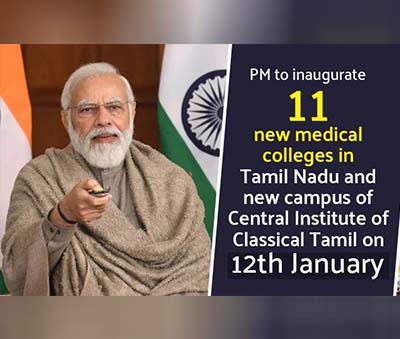 “Establishment of these medical colleges is in line with the Prime Minister’s constant endeavour to promote affordable medical education and improve health infrastructure in all parts of the country,” the announcement said.
“Establishment of these medical colleges is in line with the Prime Minister’s constant endeavour to promote affordable medical education and improve health infrastructure in all parts of the country,” the announcement said.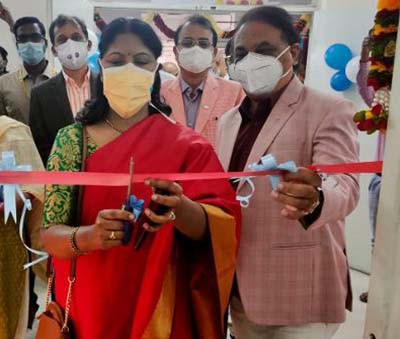 In continuation of its efforts, during the recently concluded Global Healthcare Summit in Hyderabad, AAPI donated immunoanalyzer at AIIMS, Bibinagar, Telangana, which does hundreds of tests every day. This is part of Covid relief efforts AAPI has taken over during the second wave of pandemic.
In continuation of its efforts, during the recently concluded Global Healthcare Summit in Hyderabad, AAPI donated immunoanalyzer at AIIMS, Bibinagar, Telangana, which does hundreds of tests every day. This is part of Covid relief efforts AAPI has taken over during the second wave of pandemic.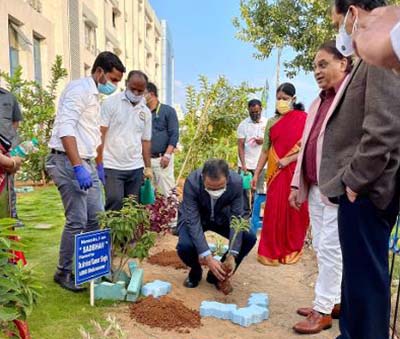 AAPI coordinated with dozens of physicians including primary care physicians, ER, critical care and ID physicians, who see these patients on a constant basis, to help during this crisis. Questions are being sent by email and physicians answer them at the earliest convenience.
AAPI coordinated with dozens of physicians including primary care physicians, ER, critical care and ID physicians, who see these patients on a constant basis, to help during this crisis. Questions are being sent by email and physicians answer them at the earliest convenience. Dr. Anupama Gotimukula, president of AAPI along with Dr. Satheesh Kathula, AAPI secretary, and Dr. Sujeeth Punnam, Chair, Chair, Covid relief committee participated in the inauguration of biochemistry lab/Immunoanalyzer at AIIMS, Bibinagar, Hyderabad. Later on they planted trees in AIIMS Vatika, Bibinagar and named one of them “AAPI”. For more details, please visit:
Dr. Anupama Gotimukula, president of AAPI along with Dr. Satheesh Kathula, AAPI secretary, and Dr. Sujeeth Punnam, Chair, Chair, Covid relief committee participated in the inauguration of biochemistry lab/Immunoanalyzer at AIIMS, Bibinagar, Hyderabad. Later on they planted trees in AIIMS Vatika, Bibinagar and named one of them “AAPI”. For more details, please visit:  “During the 15th annual Global Healthcare Summit, organized in Hyderabad, India from January 5th to 7th, 2022, physician leaders from the United States and India had an opportunity to brainstorm and explore ways to focus on the theme, “Transformation of Healthcare through Telehealth and Technology usage during this post-Covid Era,” and have recommended possible ways to plan and implement preventive medicine that will save resources and precious human lives,” said Dr. Anupama Gotimukula, President of AAPI.
“During the 15th annual Global Healthcare Summit, organized in Hyderabad, India from January 5th to 7th, 2022, physician leaders from the United States and India had an opportunity to brainstorm and explore ways to focus on the theme, “Transformation of Healthcare through Telehealth and Technology usage during this post-Covid Era,” and have recommended possible ways to plan and implement preventive medicine that will save resources and precious human lives,” said Dr. Anupama Gotimukula, President of AAPI.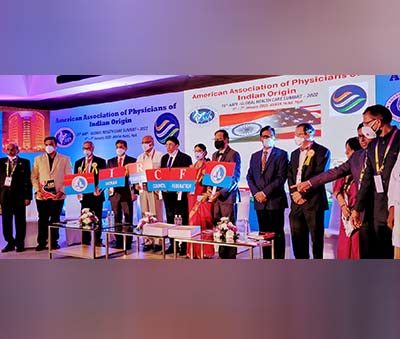 “With numerous initiatives, AAPI has come a long way since its inception and has proved to be beneficial not only to Indian-origin American Physicians, but to Indian healthcare as well,” Mr. Naidu observed. He urged the medical fraternity and told them, “as you seek excellence in human health and well-being, do not forget the power of a kind human touch when treating your patients.”
“With numerous initiatives, AAPI has come a long way since its inception and has proved to be beneficial not only to Indian-origin American Physicians, but to Indian healthcare as well,” Mr. Naidu observed. He urged the medical fraternity and told them, “as you seek excellence in human health and well-being, do not forget the power of a kind human touch when treating your patients.”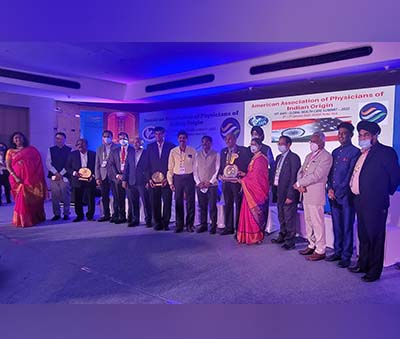 The groundbreaking Global Healthcare Summit (GHS) organized by AAPI in collaboration with the Government of India, BAPIO & GAPIO, as well as Host Alumni Chapters, including OGKTMA, ATMGUSA, KAMCOSA, and GMCGA, was packed with programs that were treat to the hearts and souls of every participant.
The groundbreaking Global Healthcare Summit (GHS) organized by AAPI in collaboration with the Government of India, BAPIO & GAPIO, as well as Host Alumni Chapters, including OGKTMA, ATMGUSA, KAMCOSA, and GMCGA, was packed with programs that were treat to the hearts and souls of every participant.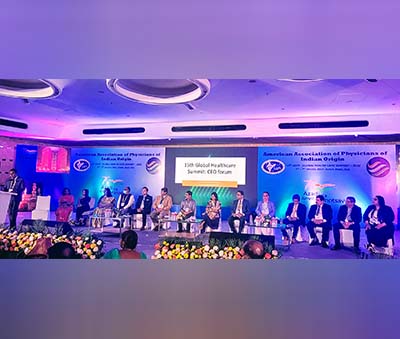 Dr. Ravi Kolli, President-Elect f AAPI said, “We have made great strides in helping people to live longer, however, people are spending too many years in poor health, and these gains in health not felt equally across society. We need to focus on the rising levels of obesity, mental illness, addictions, age-related conditions like dementia, and a growing, ageing, and diverse populations, We also need to be aware of cyberbullying, pervasive misinformation and other harmful social media influences affecting our youth.”
Dr. Ravi Kolli, President-Elect f AAPI said, “We have made great strides in helping people to live longer, however, people are spending too many years in poor health, and these gains in health not felt equally across society. We need to focus on the rising levels of obesity, mental illness, addictions, age-related conditions like dementia, and a growing, ageing, and diverse populations, We also need to be aware of cyberbullying, pervasive misinformation and other harmful social media influences affecting our youth.”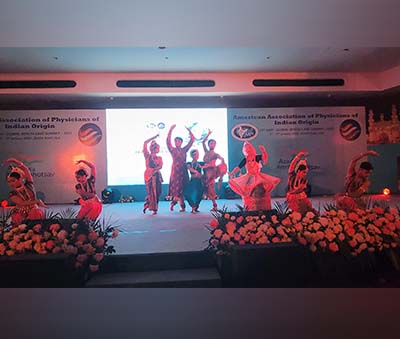 Dr. Krishan Kumar, Treasurer of AAPI, pointed out, “India, thus needs to redouble and continue its efforts and dedicate resources to tackle these perennial challenges. Many of these projects and programs need regular funding, and management of resources. We are grateful to dozens of AAPI members who have committed to serve India with an ongoing commitment.”
Dr. Krishan Kumar, Treasurer of AAPI, pointed out, “India, thus needs to redouble and continue its efforts and dedicate resources to tackle these perennial challenges. Many of these projects and programs need regular funding, and management of resources. We are grateful to dozens of AAPI members who have committed to serve India with an ongoing commitment.”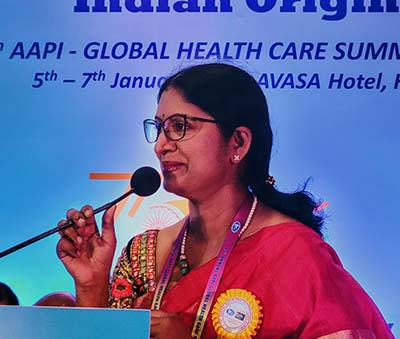 The topics for CMEs broadly covered the recent advances in Medicine. Workshops on Medical Education and Reforms in India, Psychiatry, Palliative Care and Diabetes as well the seminar on Lifestyle Medicine led by world renowned leader and founder of Life Style Medicine, Dr. Neil Bernard were educative and offered new awareness on trends in medicine and healthier living. The Tuberclosis Awareness Seminar focused on recent advances in the TB epidemic.
The topics for CMEs broadly covered the recent advances in Medicine. Workshops on Medical Education and Reforms in India, Psychiatry, Palliative Care and Diabetes as well the seminar on Lifestyle Medicine led by world renowned leader and founder of Life Style Medicine, Dr. Neil Bernard were educative and offered new awareness on trends in medicine and healthier living. The Tuberclosis Awareness Seminar focused on recent advances in the TB epidemic.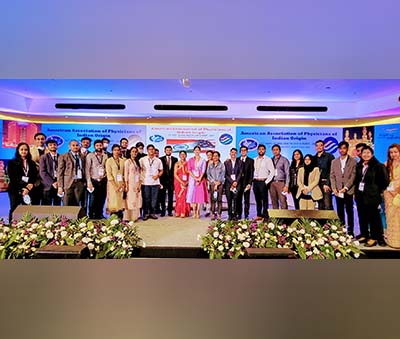 The CEO Forum, chaired by Dr. Joseph Chalil had a galaxy of CEOs from India and the United States, who shared their insights into the challenges and opportunities for making healthcare affordable, using modern technology and scientific research, Sangita Reddy, Joint MD of Apollo group of hospitals and incoming Chairman of FICCI shared her passion for the care of the masses, using technology to reach out. She praised AAPI’s efforts to help India through its Healthcare Summits in making policies in healthcare delivery more effective.
The CEO Forum, chaired by Dr. Joseph Chalil had a galaxy of CEOs from India and the United States, who shared their insights into the challenges and opportunities for making healthcare affordable, using modern technology and scientific research, Sangita Reddy, Joint MD of Apollo group of hospitals and incoming Chairman of FICCI shared her passion for the care of the masses, using technology to reach out. She praised AAPI’s efforts to help India through its Healthcare Summits in making policies in healthcare delivery more effective.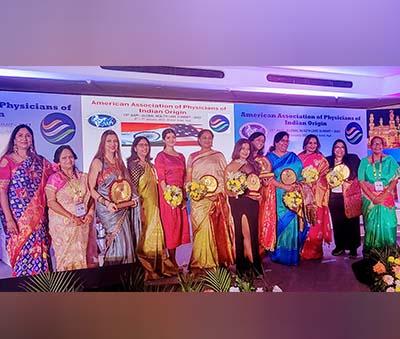 “January is #CervicalCancer Awareness Month! In coordination with the local organizers of the GHS, AAPI is donating funds for the HPV Vaccination, a total of 200 doses of the vaccine for 100 children from the state of Telangana on January 9th,” said Dr. Meher Medavaram, an organizer of the program. “AAPI’s this new initiative through education and awareness programs, is aimed at help save millions of lives in India,” she added.
“January is #CervicalCancer Awareness Month! In coordination with the local organizers of the GHS, AAPI is donating funds for the HPV Vaccination, a total of 200 doses of the vaccine for 100 children from the state of Telangana on January 9th,” said Dr. Meher Medavaram, an organizer of the program. “AAPI’s this new initiative through education and awareness programs, is aimed at help save millions of lives in India,” she added.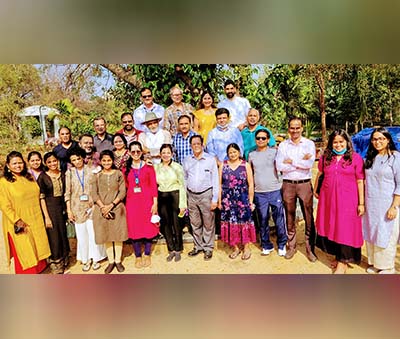 The Pre-Tour of the GHS 2019 took the delegates to the serene Kanha Shanti Vanam, located in the suburbs of Hyderabad. Magnificent in its conception and design, tranquil in its atmosphere, Kanha, blending the beauty of nature with sprawling facilities gave an inspiring experience to AAPI members an opportunity to learn to relax and meditate, through the Heartfulness movement.
The Pre-Tour of the GHS 2019 took the delegates to the serene Kanha Shanti Vanam, located in the suburbs of Hyderabad. Magnificent in its conception and design, tranquil in its atmosphere, Kanha, blending the beauty of nature with sprawling facilities gave an inspiring experience to AAPI members an opportunity to learn to relax and meditate, through the Heartfulness movement.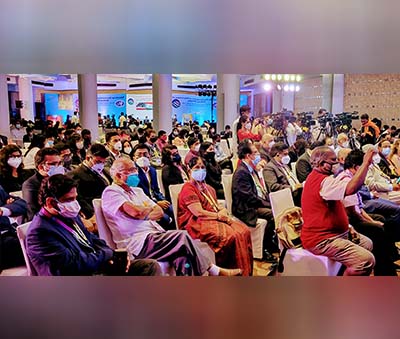 During his address to the AAPI delegates on Jan 6th, DAAJI inspired the audience with his enriching address focusing on modern day life, the stressors and the challenges, while offering insights into how stress relaxation, meditation and cleansing would help human beings lead a peaceful life.
During his address to the AAPI delegates on Jan 6th, DAAJI inspired the audience with his enriching address focusing on modern day life, the stressors and the challenges, while offering insights into how stress relaxation, meditation and cleansing would help human beings lead a peaceful life.
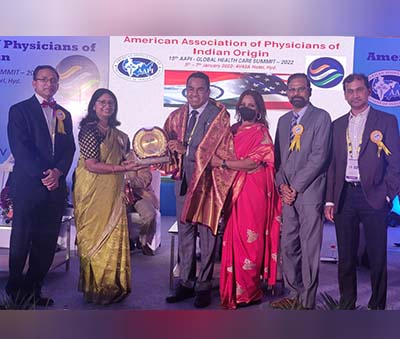
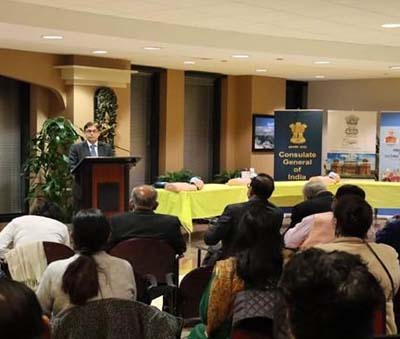 The Indian American community-focused program was jointly developed by Dr. Vemuri S Murthy, Chairman of the Board of Chicago Medical Society and Founder of the Chicago Medical Society Community Bystander CPR project “SMILE” (Saving More Illinois Lives through Education) in association with Dr. Srinivas Ramaka, an eminent Cardiologist from Telangana, India. The program was attended by several members of the Indian diaspora, leaders of Medical Organizations, and Diplomats of the Indian Consulate, staff, and families.
The Indian American community-focused program was jointly developed by Dr. Vemuri S Murthy, Chairman of the Board of Chicago Medical Society and Founder of the Chicago Medical Society Community Bystander CPR project “SMILE” (Saving More Illinois Lives through Education) in association with Dr. Srinivas Ramaka, an eminent Cardiologist from Telangana, India. The program was attended by several members of the Indian diaspora, leaders of Medical Organizations, and Diplomats of the Indian Consulate, staff, and families.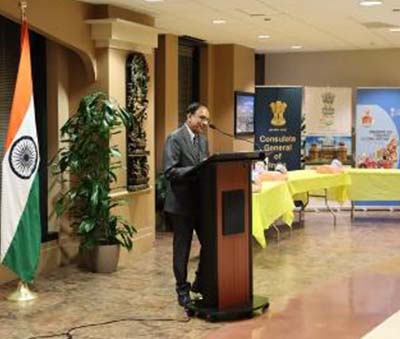 In his address, Hon’ble Member of Congress Danny K. Davis stressed the importance of taking care of one’s health. He commended the significant role of the Indian American doctors in contributing to the general health and well-being of US communities. In a virtual message, Honorable Congressman Raja Krishnamoorthi congratulated the Indian Consulate and Dr. Vemuri Murthy for organizing the program and their efforts to enhance outcomes after cardiac arrests among the communities.
In his address, Hon’ble Member of Congress Danny K. Davis stressed the importance of taking care of one’s health. He commended the significant role of the Indian American doctors in contributing to the general health and well-being of US communities. In a virtual message, Honorable Congressman Raja Krishnamoorthi congratulated the Indian Consulate and Dr. Vemuri Murthy for organizing the program and their efforts to enhance outcomes after cardiac arrests among the communities.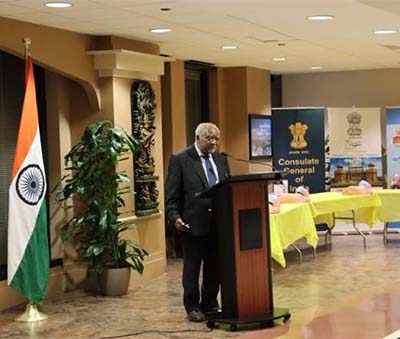 Efforts to raise awareness of heart disease and promote “Healthy Heart” lifestyles is essential. Heart disease is the number one Global Public Health problem. South Asians are at a four-times greater risk of heart disease than their western counterparts and have a greater chance of having a heart attack before 50 years of age. Heart attacks strike South Asian Men and Women at younger ages, and as a result, both morbidity and mortality are higher among them compared to any other ethnic group. They tend to develop heart disease ten years earlier than other groups.
Efforts to raise awareness of heart disease and promote “Healthy Heart” lifestyles is essential. Heart disease is the number one Global Public Health problem. South Asians are at a four-times greater risk of heart disease than their western counterparts and have a greater chance of having a heart attack before 50 years of age. Heart attacks strike South Asian Men and Women at younger ages, and as a result, both morbidity and mortality are higher among them compared to any other ethnic group. They tend to develop heart disease ten years earlier than other groups.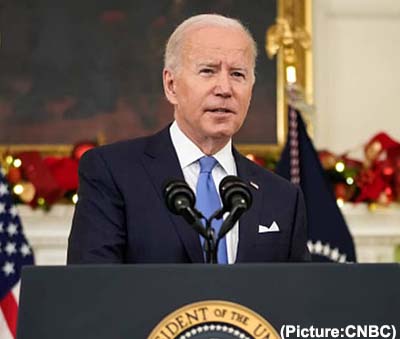 As we prepare for the return to repayment in May, we will continue to provide tools and supports to borrowers so they can enter into the repayment plan that is responsive to their financial situation, such as an income-driven repayment plan. Students and borrowers will always be at the center of our work at the Department, and we are committed to not only ensuring a smooth return to repayment, but also increasing accountability and stronger customer service from our loan servicers as borrowers prepare for repayment.”
As we prepare for the return to repayment in May, we will continue to provide tools and supports to borrowers so they can enter into the repayment plan that is responsive to their financial situation, such as an income-driven repayment plan. Students and borrowers will always be at the center of our work at the Department, and we are committed to not only ensuring a smooth return to repayment, but also increasing accountability and stronger customer service from our loan servicers as borrowers prepare for repayment.”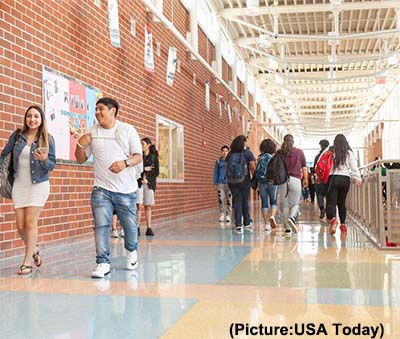 This reformative initiative requires the schools to display language outside of restrooms, informing students, whether male or female, that they may use the restroom that aligns with their gender identity. CPS prompted others, “We require all schools to adopt new signage to make our restrooms more inclusive. This is a big step forward for gender equity for our students and staff.” Is it going to influence the schooling practices themselves, or will it just be ignored?
This reformative initiative requires the schools to display language outside of restrooms, informing students, whether male or female, that they may use the restroom that aligns with their gender identity. CPS prompted others, “We require all schools to adopt new signage to make our restrooms more inclusive. This is a big step forward for gender equity for our students and staff.” Is it going to influence the schooling practices themselves, or will it just be ignored?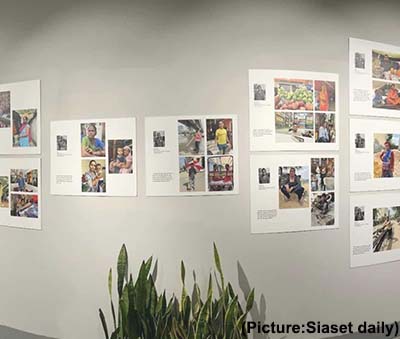 The children, aged 8 to 15, participated in the workshop for 12 classes — every Saturday — for about 12 weeks to create photo stories shot on iPhones.
The children, aged 8 to 15, participated in the workshop for 12 classes — every Saturday — for about 12 weeks to create photo stories shot on iPhones.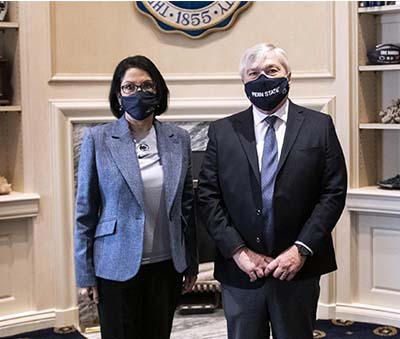 “Penn State is a world-class university, and I couldn’t be prouder and more excited to join this vibrant community of outstanding students, faculty, staff and alumni throughout the commonwealth and beyond.”
“Penn State is a world-class university, and I couldn’t be prouder and more excited to join this vibrant community of outstanding students, faculty, staff and alumni throughout the commonwealth and beyond.”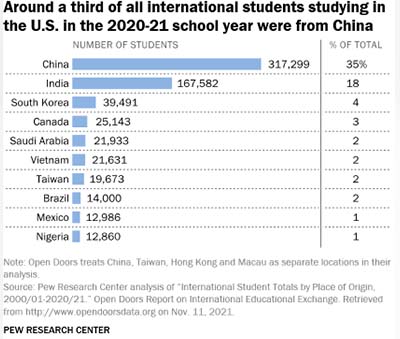 Fewer than 1 million foreign students enrolled for either online or in-person classes at U.S. universities in the 2020-21 school year, comprising 4.6% of total enrollment at American higher educational institutions. That not only marks a 15% year-over-year decrease from the 2019-20 school year, but also marks the first time since 2014-15 that fewer than a million international students have enrolled at U.S. institutions.
Fewer than 1 million foreign students enrolled for either online or in-person classes at U.S. universities in the 2020-21 school year, comprising 4.6% of total enrollment at American higher educational institutions. That not only marks a 15% year-over-year decrease from the 2019-20 school year, but also marks the first time since 2014-15 that fewer than a million international students have enrolled at U.S. institutions.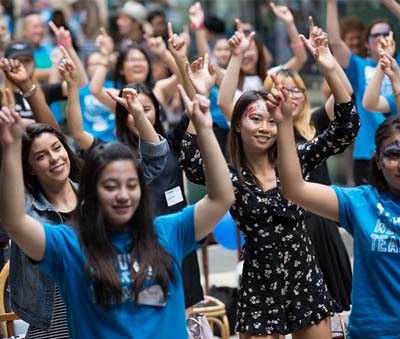 Chinese students
Chinese students